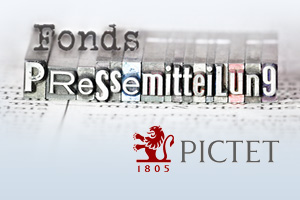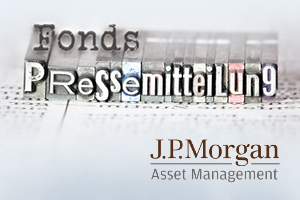Pictet | Frankfurt, 21.04.2015.
Sehr geehrte Damen und Herren, wir freuen uns, Ihnen anbei eine aktuelle Analyse von Mary-Therese Barton, Senior Investment Manager bei Pictet Asset Management und tätig im Fondsmanagement unseres Pictet-Global Emerging Debt Fonds, mit dem Titel “Dispatches from Mexico – Reform and Renewal” zuzusenden.
Kürzlich war Mary-Therese-Barton in Mexiko, Lateinamerikas zweitgrößter Volkswirtschaft, zu Gesprächen mit Unternehmensvertretern, Repräsentanten der Zentralbank sowie mit Finanzexperten. “After the trip, I’m more convinced that the government’s determination in implementing an array of structural reforms and maintaining economic stability would help Mexico’s local currency bonds weather short-term volatility and outperform other markets in the long run. This year, the yield on Mexico’s local currency bonds remained stable at around 5.8 per cent.”
… lautet eine Ihrer Aussagen darin.
Weitere Details entnehmen Sie bitte weiter unten. Wir hoffen, Ihr Interesse für das Thema und die Analyse wecken zu können und stehen Ihnen für Rückfragen oder weitere Informationen gerne zur Verfügung. Mit besten Grüßen, Oliver MOELLER, Head of Communication Germany & Austria, Tel. +49 69 79 5009 30, omoeller@pictet.com
Dispatches from Mexico: Reform and renewal
Mary-Therese Barton, Senior Investment Manager, Emerging Market Debt
Lower oil prices, a falling MXN and tighter fiscal policy have hit Mexico’s growth prospects
Mexico is making good progress on structural reforms; the central bank is committed to maintaining economic stability
The long-end of the bond market is attractive; the MXN to outperform once emerging markets stabilise
Mexico’s economic growth has been disappointing and the MXN has hit record lows against the USD after a slump in global oil prices and a worsening of the country’s drug-related violence. But investors in Mexican bonds should be encouraged by the longer-term outlook, says Mary-Therese Barton, recently returned from a research trip to Latin America’s second largest economy.
Social unrest has caused headaches for President Enrique Peña Nieto, who took office two years ago pledging to end drug-related violence that is estimated to have cost the economy more than 17 per cent of GDP(1) and killed around 100,000 people since 2007.
Now, however, both he and emerging market fixed income investors may be just as preoccupied with the impact of falling oil prices on the economy. The lower oil price has hit Mexico particularly hard as a third of its government budget is funded by energy exports. According to our economists, a 50 per cent decline in oil prices reduces the country’s GDP by 0.9 percentage points. The MXN, as a result, has lost around 3 per cent this year.
There are other factors that bond investors might find equally unsettling.
The prospect of higher US interest rates and tighter fiscal policy seem to be setting the stage for an extended period of volatility in financial markets. The fact that some 40 per cent of the country’s sovereign bonds are owned by foreign investors – who are less loyal than domestic institutions – simply reinforces that impression.
However, having met a number of corporate executives, central bank and finance officials as well as local investors during my recent trip there, I do not believe Mexico deserves to be penalised by the markets.
After the trip, I’m more convinced that the government’s determination in implementing an array of structural reforms and maintaining economic stability would help Mexico’s local currency bonds weather short-term volatility and outperform other markets in the long run. This year, the yield on Mexico’s local currency bonds remained stable at around 5.8 per cent.(2)
Fruits of reform
Peña Nieto has already set in motion far-fetching structural reforms encompassing Mexico’s energy, financial, labour, education and telecoms industries. Indeed, Mexico’s industrial overhaul is picking up pace. The country’s reform responsiveness rate, or the extent to which it acts on reforms recommended by the OECD, has reached 58 per cent in 2013-2014, above the EM average. Encouragingly, the legislative phase of this reform process is already complete, and many of the recent policy changes are already making a difference.
Take telecoms reform. Locals I met during my trip said they can now shop around for the best deals on wi-fi networks and enjoy lower connection costs and better services from phone providers, just eight months after Peña Nieto signed into law new rules for telecom and broadcasting industries. Officials also told me that labour market reforms – which involve modernising the outdated employment code, introducing hourly pay and reducing the scale of the black market economy – are expected to increase growth by 0.3 percentage points per year in the next five to six years. The government has said labour reforms would generate an additional 400,000 jobs a year on top of ones already being created. This has helped cut the net migration of workers from Mexico to the US to zero; many migrants are already returning to their homeland.
Lawmakers are now focusing on the most ambitious reform — the opening of Mexico’s oil and gas industry to private investment, ending the 75-year monopoly enjoyed by state-controlled PEMEX. The government is auctioning one of its oil fields for the first time ever in August. The IMF estimates reductions in electricity tariffs stemming from the energy reform could increase manufacturing output by up to 36 per cent.(3) According to finance officials I’ve spoken to, the energy reform should increase GDP by 1.2 percentage points per year. Ratings agency officials I met expect Mexico’s economy to reach a potential growth rate of 3-4 per cent from the current 2-3 per cent, thanks largely to structural reforms.
Fiscal credentials
Mexico’s budget deficit has substantially worsened over the past three years to 3.3 per cent of GDP.(4) However, this needs to be put into perspective. The country has a credit rating of ‘A’ by Standard & Poor’s with a stable outlook, while the level of its public debt relative to GDP stands at around 40 per cent,(5) below the 100 per cent-plus average for the developed world and better than that of other major developing economies such as Brazil and India. The government is overhauling the country’s tax law to broaden the range of taxes people must pay as part of fiscal reforms.
The sin tax – a 5 per cent tax on packaged foods that contain 275 calories or more per 100 grams to dissuade Mexicans from eating sugary and salty foods – may be the most infamous one, but the government has also introduced a 10 per cent capital gains tax on individuals and ended special treatment for certain industries which have avoided tax. For 2015, the government is also cutting spending by 0.7 per cent of GDP. Even when growth is slowing, officials I’ve met gave me the impression that the government is serious about keeping fiscal discipline, mainly in order to send a strong message to foreign investors that the country is committed to maintaining macroeconomic stability. I do not believe the government would loosen its fiscal belt and threaten macroeconomic stability ahead of the midterm elections due in summer 2015. Indeed, I was informed that Peña Nieto has told Hacienda, the Finance Ministry, that macro stability is an asset that Mexico has gained and which has to be preserved at all costs.
Keeping pace with the Fed
Bank of Mexico officials made it clear to me that they also wanted to send a strong signal overseas that the bank stands ready to raise interest rates in order to keep the cost of borrowing stable relative to the US and reduce outflows, when the US Federal Reserve tightens. This is in spite of weak growth and core inflation hovering below its target of 3 per cent.
During my meetings with monetary policymakers, I got the sense that the central bank’s top priority remains macroeconomic stability – and this explains why it is stemming volatility by conducting daily FX auctions and interventions. I think it could even be that the Bank of Mexico may tighten before the Fed and tell the world that they are well prepared.
Central bank and financial officials I met seemed to think that the economy is going in the right direction, albeit gradually. The export-led manufacturing sector is picking up thanks to a US recovery, lifting domestic demand, which should contribute to higher growth and inflation. This is in keeping with Pictet Asset Management’s proprietary leading indicator index for Mexico, which points to a further economic expansion, driven by a strong momentum in consumer spending and manufacturing activity. Our economists expect Mexico’s GDP growth to recover to 2.5 per cent this year before accelerating further to 3.5 per cent in 2016.
Investment implications
It’s too early to give Mexico a clean bill of health in the short term. Over the next few months, the front-end of the bond market is likely to remain volatile given its sensitivity to changes in US interest rate expectations. However, this trip made me more comfortable with holding the long-end of the yield curve given that the long-term economic outlook for Mexico is likely to improve thanks to structural reforms. We expect the yield differential between the short end and long end of the bond market to narrow. The MXN is likely to remain under pressure in the face of broad USD strength, at least over the near term. However, it is a currency we find attractive and we will be looking to increase our exposure as soon as we see signs of a stabilisation in emerging economies. Moreover, Mexico’s inflation-linked bonds, also known as UDIs, look appealing given that inflation is likely to rise towards the central bank’s target in the medium term.
Mary-Therese Barton, Senior Investment Manager, Emerging Market Debt
Mary-Therese Barton joined Pictet Asset Management in 2004. She is a Senior Investment Manager responsible for global emerging market debt portfolios. Before assuming her current position in 2005, she was an Emerging Debt Analyst.
Prior to joining Pictet AM she worked at Dun & Bradstreet, where she was an economist responsible for analysing European countries.
Mary-Therese graduated with a BA (Hons) in Philosophy, Politics and Economics from Balliol College, Oxford. She also holds an MSc with distinction in Development Finance from the Centre for Financial Management Studies, SOAS (School of Oriental and African Studies), part of the University of London. Mary-Therese is also a CFA charterholder.
Pictet Asset Management Limited
Moor House
120 London Wall
London EC2Y 5ET
www.pictetfunds.com
www.pictet.com
1 The Institute for Economics and Peace
2 JP Morgan GBI-EM Mexico average yield to maturity, 31.12.2014 – 13.04.2015
3 IMF, 02.2015
4 Pictet Asset Management, CEIC, Datastream, 2014
5 IMF




